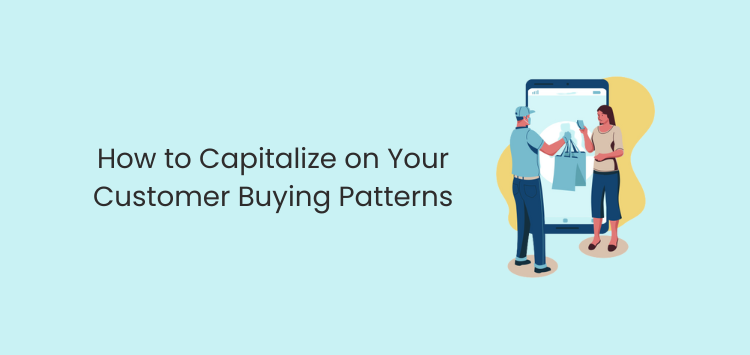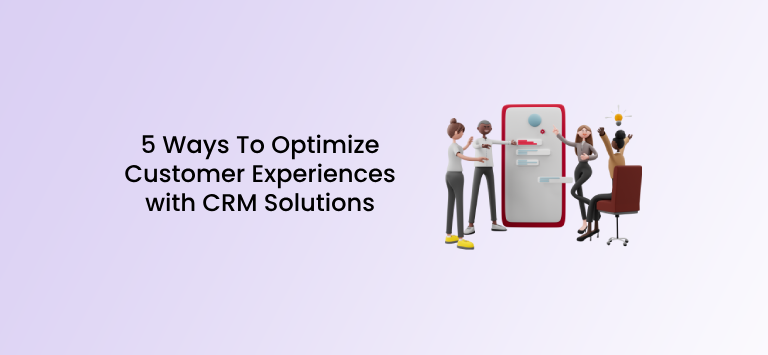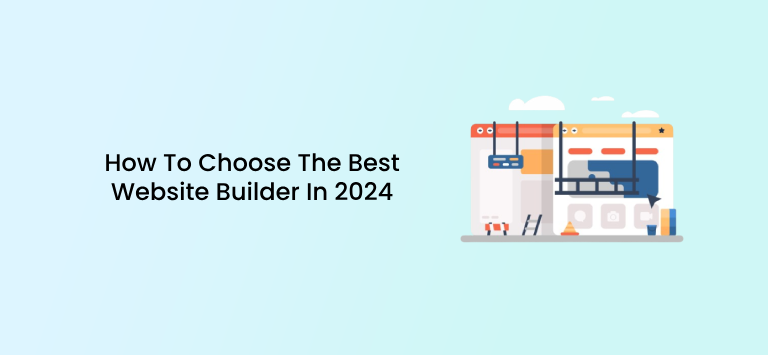How well do you understand your customers? You might be confident you know a lot about them, but could you have a firmer handle on why they act the way they do? This article explores customer buying patterns and the impact they have on your business. We’ll look at what shapes buying behaviour, explain several common buying patterns, and give a few tips on how best to turn them to your advantage.
What Factors Shape Buying Behavior?
Whether you’re a solo creative who’s all about making money on Instagram or a corporate sales executive leading a multinational team, you need to understand why buyers act the way they do.
Although the reasons for consumer behavior can be complex, there are a few key factors that can help pin them down:
Economic Environment
Let’s begin with the most important factor of all: the economic environment. They say that a rising tide lifts all boats, which is true. But it’s equally true that when that tide goes out, many of us can’t afford to go sailing.
Inevitably, consumers adapt their behavior according to how wealthy they feel. When times are good, more buyers are likely to make impulse purchases regularly. When a downturn comes, more planning goes into each buying decision. Either way, your business can benefit as long as you adapt your strategy accordingly.
Pay close attention to customer journey orchestration. In other words, learn how to interact with your customer at each stage to maximize sales potential. This will help you respond quickly to changes in the economic environment, whether they be positive or negative, and ensure that you are making the most of your customer interactions.
To maximize your business’s potential, you should focus on understanding customer buying patterns. One way to do this is to hire full-stack developers to optimize your website or sales funnel to encourage visitors to take desired actions. This can help you turn more visitors into customers and boost your overall revenue.
While website optimization is important, a more efficient way to gain real-time insights is by implementing live chat. Through live chat conversations, you can directly observe customer behavior, answer questions, and address concerns throughout their buying journey. This valuable data can then be used to refine your website and sales funnel, ultimately turning more visitors into customers and boosting your revenue.
To further maximize sales potential, you can focus on conversion rate optimization. By optimizing your website or sales funnel, you can encourage visitors to take desired actions, such as making a purchase or signing up for a newsletter. This will help you turn more visitors into customers and boost your overall revenue. However, it’s important to keep in mind that conversion rate optimization should complement your understanding of customer buying patterns, as it can help you tailor your strategy to meet the needs of your customers.

Social Influences
Although you’re looking for general patterns, it’s useful to remember that each individual buyer is unique. All consumers are subject to a range of social factors including demographic considerations such as age and geographic location, lifestyle choices like eating habits, as well as less tangible but still fundamental elements such as their ethical values. No two people have exactly the same mix. Even so, identifying subgroups of consumers whose buying patterns are similar can help with targeting strategy.
But just one note of caution here. While you will to a certain extent be dealing with averages, never forget that you can miss out on sales opportunities if you’re looking in the wrong direction. For example, there’s no reason why a retired senior wouldn’t enroll on a data engineering certification course or a high schooler buy a luxury watch.
Social factors can be a useful guide, but you should never rely on them 100%. Consumers can – and will – surprise you.
Consumer Psychology
A lot has been written about how to harness the power of consumer psychology. From placing products strategically in grocery stores to the timing of discounts on an e-commerce site, this is a well-trodden road.
Buying patterns are dependent on factors such as value or quality perception and convenience of purchase options. One example of this is the rise in contactless payments via cards and smartphone apps. According to Grand View Research, the total amount of money spent via contactless in the US is expected to have grown by an average 19% per year between 2020 and 2030.

The convenience of contactless payments can have a real impact on how consumers conduct purchases, especially impulse buys. But there’s a lot more to consider when it comes to purchasing behavior. Let’s take a look at the major types of buying patterns and how they’re influenced by customer thinking.
Types of Customer Buying Patterns
Consumer purchasing patterns tend to fall into several different broad categories. These are dependent on basic factors including how large the purchase is and how often the items are bought. But it can also be instructive to look at the question from the point of view of consumer motivation.
After all, when you’re measuring customer engagement with your brand, knowing a bit about why your customers act the way they do can give you a head start.
In this section, we look at habitual, variety-seeking, dissonance-reducing, and complex buying behaviors.
Habitual
When people make habitual purchases of a particular item, they’re generally demonstrating brand loyalty, either consciously or not. This can manifest itself not only in everyday shopping decisions but also in less frequent ones.
When you go to the store to buy groceries, you probably don’t think about which brand or type of pasta to buy. If you usually throw a pack of brand X wholegrain fusilli in your cart, it’s likely you’ll do the same next week. Humans are creatures of habit. We don’t like to spend too long making small decisions.

But what about bigger purchases? In some cases, these can be habitual purchases too. If you perceive the quality of one brand of smartphone or washing machine as being higher than that of others, then you may not even consider other brands when the time comes to replace the high-value item.
Habitual patterns pose a challenge to competitors. In order to persuade consumers to try something new you’ll need to meet their needs more effectively – and make sure that’s communicated clearly.
Implementing a text alert system can be a powerful tool to capitalize on habitual buying patterns, as it allows you to communicate with customers in real-time and remind them of your product or service.
Variety-seeking
On the other hand, when consumers display variety-seeking buying behavior, they’re much more open to change. In fact, they’re actively looking for it. This is more common in some industries than others. For example, fashion choices tend to change with the seasons as new styles appear. Online clothing stores know this and put a heavy focus on SEO techniques and customer feedback management to try to retain business.
Indeed, customer retention is the main challenge when it comes to variety-seeking behaviour. After all, consumers who switch to your product or service just to try it out will be just as easily persuaded to switch again to a competitor. This means that if you see this kind of pattern regularly in your line of business, you should place an emphasis on keeping your offering fresh to retain your customers’ interest.
Dissonance-reducing
When a consumer feels a purchase decision is important but struggles to distinguish between different brands, they may show dissonance-reducing behavior. It’s named for the psychological concept of cognitive dissonance, which means the mental conflict that arises when your inner beliefs are inconsistent with your actions.

In marketing terms, this happens when products are very similar, but the consumer is hugely invested in making the right choice. This can lead to feelings of anxiety afterwards that they may have got it wrong. To tackle this, you need to focus on differentiating your product in some way, be that via price, quality, or value perception. Run your product details through supply chain optimization tools, so you can ensure that your product ticks all the boxes. This makes things much easier for a buyer to see it as the right choice.
Complex
If a purchase decision is important, but there are marked differences between the options, you’ll see complex buying patterns. Here, the customer will research the market comprehensively before coming to a final decision. Big ticket purchases such as cars or household goods (when not influenced by brand loyalty or habit) will tend to fall into this category.
There are two things that can help win a customer showing this particular pattern over: high quality at a good price, and clear communication of your product’s benefits.
How to Use Consumer Buying Patterns to Your Advantage
We’ve briefly touched on how to deal with the most common buying patterns, but there are a couple of best practices you should always put in place too.
Understand your target market’s preferences
You can never underestimate the importance of adopting a data-driven marketing strategy. Use all the tools at your disposal, including:
- Customer behaviour surveys
- CRM tools
- Google Analytics
- Customer satisfaction surveys
The goal is to achieve actionable insights into how and why your customers decide to purchase your brand. For example, if your target market skews young, you may find they are less brand-loyal than older consumers.

Armed with this knowledge, you’ll have a much better idea of how you need to tailor your strategy.
Tailor your strategy to the buying behaviour
The right strategy will vary a lot depending on what you’re selling. If you sell business software, for example, you’ll generally be contending with complex buying patterns. That means you may find focusing on SEO techniques beneficial to help you rank for keywords throughout the customer journey – from informational searches like ‘What is data lakehouse?’ to transaction ones like ‘buy small electric car’. Once you have your potential customers’ attention, you then set about developing a trust relationship.
On the other hand, if you sell household detergents, the main aim should be to encourage habitual purchases of your product. Focus on cultivating brand loyalty, and you won’t go far wrong.
If your product or service is very similar to the competition’s, you need to be aware of the kind of dissonance-reducing buying pattern we explained earlier. The best approach here is to offer the customer some kind of insurance so they’re less likely to feel anxiety or regret after purchasing your product. For instance, this could take the form of a free trial, which gives them some reassurance that they can change their mind later.
Finally, if a large proportion of your customers show variety-seeking buying patterns, there are two elements you should put in place: a customer retention strategy that emphasizes innovation in your offering, and a recognition that some degree of churn is inevitable. Leverage content marketing techniques to attract new business, while keeping a close eye on existing customer engagement.
Make customer buying patterns work for you
Getting to grips with how your customers act can seem like a tricky challenge at first. However, understanding buying patterns is the key to unlocking greater success.
With the right mixture of qualitative and quantitative research techniques and a hefty dose of imagination, you can cut through the complex picture of customer behavior and achieve genuinely actionable insights.
Author’s Bio: Pohan Lin is the Senior Web Marketing and Localizations Manager at Databricks, a global Data and AI provider connecting the features of SQL server pivot rows to columns, data warehouses and data lakes to create lakehouse architecture. With over 18 years of experience in web marketing, online SaaS business, and ecommerce growth. Pohan is passionate about innovation and is dedicated to communicating the significant impact data has in marketing. Pohan Lin has also written for domains such as SME-News.









